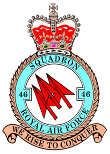|
Dickey was a keen shot, target shooting with rifle and game, particularly wildfowl, with 12-bore. I was given my first air rifle while at Digby and thus introduced to the care and use of firearms for which I have always been grateful because these weapons have never held any mystery for me but have always commanded respect. Much entertaining went on at my home. There were frequent dinner parties and they always seemed, although fairly formal, to contrive to be quite noisy and boisterous as well – perhaps convivial is the right word. Squadron pilots were frequent visitors and I was always impressed by these, to a small boy, mighty men. My parents also had a great capacity for making close and lasting friendships among the local community. We were never insular or isolated. One Important Event occurred while we were at Digby – I ceased to be an only child when my brother Richard was born! Again, I have no recollection of going to any school! Dickey took pains always to make sure that I was well informed and knew what was going on: I well remember him telling me about deteriorating International affairs and the looming war. When things were quiet at weekends he would take me to visit the Squadron offices and hangar where I could climb in and out of aircraft. I remember his explaining that they were doing some experiments with the lining up and sighting of the guns on the Hurricanes and for this he had had to borrow some of Mum’s lipstick to put temporary marks on the aircraft windscreen. I think he must have been quite inventive! On the outbreak of war, my parents thought that a front line fighter airfield would be much too dangerous a place for young children so my brother and I were dispatched to live with Dickey’s parents in a Cambridgeshire village and I had to go to school! My lovely, gentle grandparents had quite a lot to put up with as my aunt’s two children, cousins Jennifer and Peter were also lodged with them for the duration, so all-in-all they had their hands full but they took to the fresh infusion of young children and their new in loco parentis duties with gusto! In November, 1939 46 Squadron was involved in one of the very first successful fighter interceptions of the war: led by Dickey, the Squadron shot down a number of HE 115 seaplanes which were attacking a convoy off Spurn Head. By later standards this would have been a very minor incident but at that time any successful feat of arms was big news, there would have been security blankets on some aspects of reporting but this didn’t prevent the press from descending on my grandparents in the quest for a story, so, briefly we were major stars! After this incident King George VI honoured Digby with a visit and 46 Squadron pilots were presented to him.
Epilogue
Shortly after the seaplane interception Dickey was promoted and posted away from the Squadron, whose fortunes we continued to follow. We knew about the Norwegian campaign and its ending with the tragic sinking of HMS Glorious and her escort after the wonderful feat of airmanship by which 46 Squadron landed some of its Hurricanes onto the carrier. We knew about the near miraculous survival of Flight Commander Jamie Jamieson of New Zealand and Squadron Commander “Bing” Cross, rescued after many hours afloat in the North Sea on a Caley float after the sinking. Eventually, as one of the youngest Group Captains, Dickey was posted to R.A.F. Biggin Hill, in 1941, to command the station and the Sector. Jamie Jamieson was one of his Wing Leaders and the famous “Sailor” Malan of South Africa was another. At that time, with the Luftwaffe defeated in the Battle of Britain, Fighter Command was able to turn much of its capacity to offensive action thus bringing the war directly to the enemy in Northern Europe. This required the development of new and radical fighter tactics, equipment and procedures. Dickey was convinced that in order to play his proper part as a Commander in this he had to share in the fighting experience and he frequently flew on operations, usually as No 2 to a wing or squadron leader. On 1st July, 1942 (the day before his 35th birthday) and while flying as No 2 to Bobby Oxspring, CO of 91 Squadron over the Channel, near Beachy Head the pair were wrongly identified by another pair of Spitfires out of Tangmere and Dickey was shot down and killed. The incident is graphically described (but, I think, with a modicum of artistic license) in Bobby’s book “Spitfire Command”. A few days later Dickey’s body was washed ashore at a beach near Boulogne. He is buried at a Canadian war graves cemetery near Calais. This is a beautiful, sad place, on a North facing slope it looks out over Cap Griz Nez and the English Channel towards Dover and every time that I have been there the white cliffs have been in full, clear view. Many very young Canadians who were killed in the deadly, final struggle to liberate Calais in September 1944 are interred there. Dickey had a close affinity and shared a mutual respect with the tough, independent and sometimes cussed fighting men from the Commonwealth, beginning with the Canadian and New Zealand pilots serving on 46 Squadron during his time in command and I have come to believe that this Military Cemetery is an entirely fitting place for his final resting place.
John Barwell, Bourn, 2009 |





